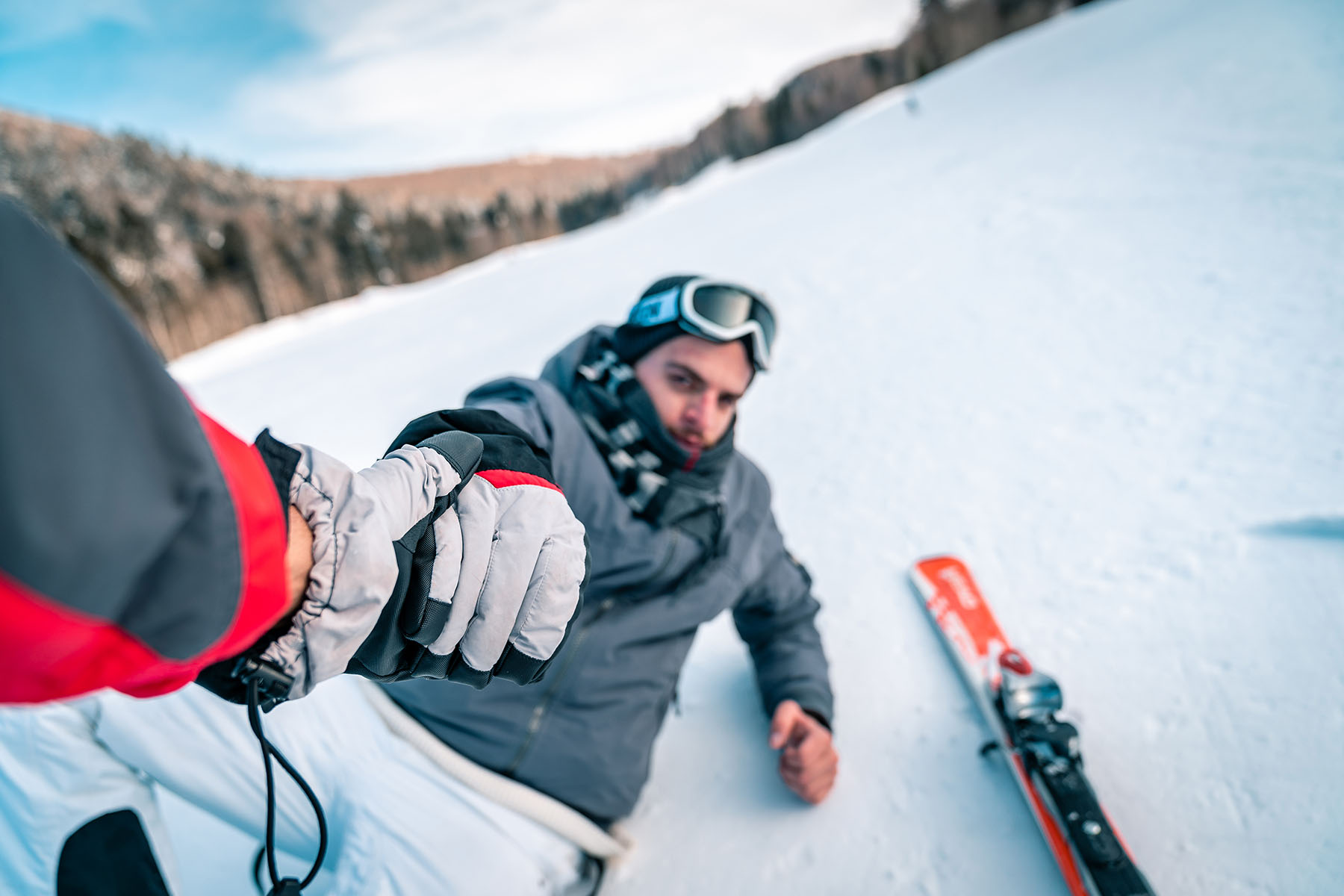5 Tips to Avoid Skiing Injuries

If downhill skiing tops your wish list for a winter vacation, don’t let ski injuries crash the party and ruin your vacation.
Advances in ski equipment safety and quality have greatly reduced the number of skiing injuries, from painful thumb sprains to fatal head injuries. But the risk is still serious, and getting hurt is more common among recreational skiers who rarely get the chance to hit the slopes.
The most common skiing injuries include:
- knee sprains: anterior cruciate ligament (ACL), medial collateral ligament (MCL)
- shoulder sprains, fractures, and dislocations
- wrist and thumb sprains, fractures, and dislocations
- rotator cuff tears
- head injuries (responsible for more than half of skiing-related deaths): whiplash, concussion
1. Prepare your muscles for action.
On the slopes, you’ll need your core muscles for balance, leg strength and hip flexibility to control your path, and shoulder muscles to give you that extra push. Staying in shape throughout the year will help you avoid sprains and overuse injuries during ski season.
2. Get the right clothes and gear.
What you wear and your chosen equipment will significantly affect your safety, comfort, and performance on the ski slopes.
- Wear layered clothing to keep your body warm. Quick-drying materials for the underlayer will keep sweat away from your body — reducing friction, chafing, and blisters.
- Wear sunglasses or goggles to protect your eyes from glare, snow, irritating particles, and potentially dangerous objects like tree branches and rocks.
- Wear a lightweight, properly fitted helmet to lower the risk of head injuries and make yourself more visible to other skiers. Helmets can protect your head if you crash into a tree/rock, the ground, or another skier.
- When renting equipment, don’t overestimate your skill level. To optimize your comfort and safety, rent equipment that best suits your skills and abilities. Pro-level gear may look cool but it isn’t designed for newer skiers.
- A common mistake is getting boots that are too stiff or too narrow. Choose soft and flexible boots in the front and back with more rigidity across the width.
- Don’t set the ski bindings too tightly. If you rent your gear, the ski shop will set the bindings based on your height, weight, and skiing ability. It’s important to lower the setting as much as possible until you can ski normally without falling out of the binding. Setting the binding this way will reduce your chances of injuring a knee ligament like the ACL.
- Use ski poles without straps. If you’re wearing the straps and you fall, you can easily land on your hand and tear the thumb’s ulnar collateral ligament.
- Pick the correct ski width. If your skis are too wide (more than 100 millimeters), it’s harder to make turns. It takes less skill and effort to turn on narrower skis (80 to 90 mm).
- If you’re using your own skis, tune them before you hop on the ski lift. If you’re skiing daily for more than a few days, tune your skis every five to seven days. This will make it easier to start and hold turns and glide down the mountain.
- When skiing on powdery snow, it’s easier and safer to ski with powder skis (compared to hard-snow skis).
3. Wear sunscreen.
While you may associate sunburns with the beach, it’s important to protect your face, neck, and ears from sun exposure and burns when you’re on the slopes. The sunlight and UV rays bounce off the snow, and the higher elevation intensifies the rays.
4. Remember that skiing is physically demanding.
Swishing down the hills may look like a passive activity, but skiing is a workout. To help prevent muscle strains, prepare for the ski slopes the same way you’d warm up for a run or a friendly game of basketball. Stretch out your calves, the front and back of the thighs, and your hip flexors. To avoid impact injuries, practice good form and proper poling technique. Focus on proper takeoffs and flat landings to reduce the trauma to your body.
5. Stay hydrated.
Most skiing injuries happen when fatigue and dehydration set in. Don’t forget to drink water throughout the day, even if you don’t feel thirsty. Coffee, beer, and wine aren’t suitable substitutes for water when you’re physically active.
Written by Dana Kantrowitz, a contributor for UHealth’s news service. Medically reviewed by Jesica Brown, MPS, LAT, ATC, Sports Medicine Senior Practice Manager with the University of Miami Health System.
Tags: experienced skiers, reduce the risk of injury, skier injury, skiing and snowboarding, wear a helmet
